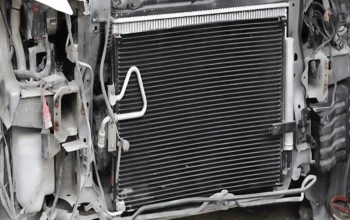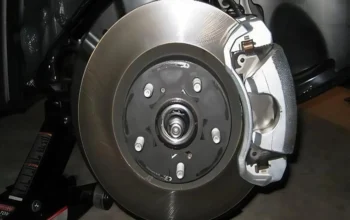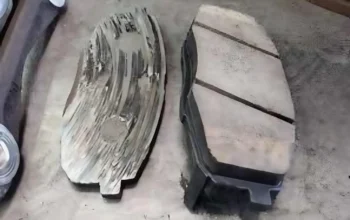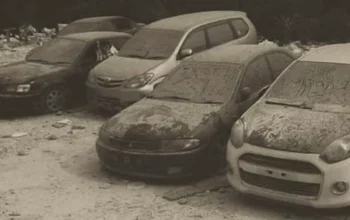Pena Global – When temperatures drop, one of the most frustrating issues drivers face is a frozen brake caliper. This can happen overnight and suddenly make your car hard—or even impossible—to move. If you’ve ever walked out to a cold car only to realize one wheel won’t budge, you’re probably dealing with a stuck brake caliper or, worse, a seized brake caliper. So, how do you fix a frozen brake caliper without calling a tow truck right away?
In this guide, we’ll break down simple steps you can try to thaw your brakes, what to avoid, and how to keep it from happening again. We’ll keep it easy to follow and beginner-friendly—no heavy mechanic jargon here. Let’s jump in.
Table of Contents:
1. Start With Heat to Thaw the Brakes
The fastest way to free a frozen brake caliper is by warming up the system. Cold metal contracts and traps moisture, which can freeze up the caliper and make the wheel seize.
- Let your car idle for at least 10 minutes. The heat from the engine can slowly warm up nearby components, including the brakes.
- Use a hairdryer or heat gun (if available) to carefully apply direct heat to the wheel and caliper area. Be cautious with open flames—don’t use a torch.
- For rear brakes, especially on older vehicles, try shifting between drive and reverse a few times. This rocking motion, combined with a bit of heat, can break the ice grip.
- Add some weight in the trunk if your rear brakes are stuck. It helps get better traction and may ease the pressure.
- Pour warm (not boiling) water over the visible icy parts of the brakes. This can quickly melt surface ice. Be sure to dry the area afterward to prevent re-freezing.
2. Pump the Brake Pedal
This old-school trick can sometimes work wonders. By manually building hydraulic pressure, you might be able to push the frozen caliper piston back into motion.
- Pump the brake pedal firmly and repeatedly. You’re trying to nudge the stuck parts free.
- Don’t slam it, though. You risk pushing the piston out too far and losing brake fluid.
- If the pedal suddenly loosens or you hear a faint click, that’s a good sign—it means something’s moving again.
3. Try Driving (But Only If It’s Safe)
If the brake isn’t fully locked up and your car can still roll, a short and careful drive can help generate enough friction to thaw things naturally.
- Drive slowly around the block to let the brakes warm up through use.
- Keep your speed low and avoid traffic-heavy areas.
- If the issue worsens, stop immediately.
4. When to Call a Professional
Let’s face it—not all frozen brake issues are DIY-friendly. If you’ve tried warming the area, pumping the pedal, and nothing works, it’s time to bring in the pros.
- Don’t force the car to move if the wheel is fully seized. This could ruin the rotor or caliper.
- A professional mechanic can lift the car, inspect for internal damage, and safely fix a frozen brake caliper without risking more harm.
- Many shops also offer winter car maintenance packages that can help prevent these problems from happening again.
5. Preventing a Frozen Brake Caliper in the Future
They say prevention is better than cure—and that’s especially true with brakes. Follow these steps to avoid another frosty brake surprise next winter.
1. Winterize Your Vehicle
Take your car to a shop that offers professional winterizing services. They’ll make sure all the rubber components are conditioned, caliper slides are clean, and your system is ready for snow and ice.
2. Maintain Brake System Regularly
Schedule regular inspections to keep your brakes clean and rust-free.
- Use anti-seize lubricant on caliper pins and sliders.
- Replace worn pads and rotors before winter hits.
- Ask your mechanic to check for moisture in your brake lines, which can freeze.
3. Park Smart
Where you park matters more than you think in cold weather.
- Avoid parking in areas where water pools or where snow gets packed around your wheels.
- If you park outside, move your car regularly to prevent moisture from sitting and freezing.
- Try to park in a garage or covered spot during harsh winters.
4. Flush Brake Fluid Every Other Year
Moisture builds up in brake fluid over time. In freezing temperatures, this moisture can ice up the system.
- A brake fluid flush every 2 years helps maintain pressure and prevents freezing.
- Ask your mechanic to use high-quality, winter-rated fluid if you live in cold climates.
Final Thoughts
Dealing with a frozen brake caliper can be stressful, especially when you’re in a rush. But with a little patience and the right methods—thawing, pumping, or even gently driving—you can often fix a frozen brake caliper yourself. If nothing works, don’t push it—call a pro and stay safe.
And remember: winter doesn’t just freeze roads—it can freeze your car too. Keep your ride in good shape with regular winter car maintenance and a proactive brake care routine.






